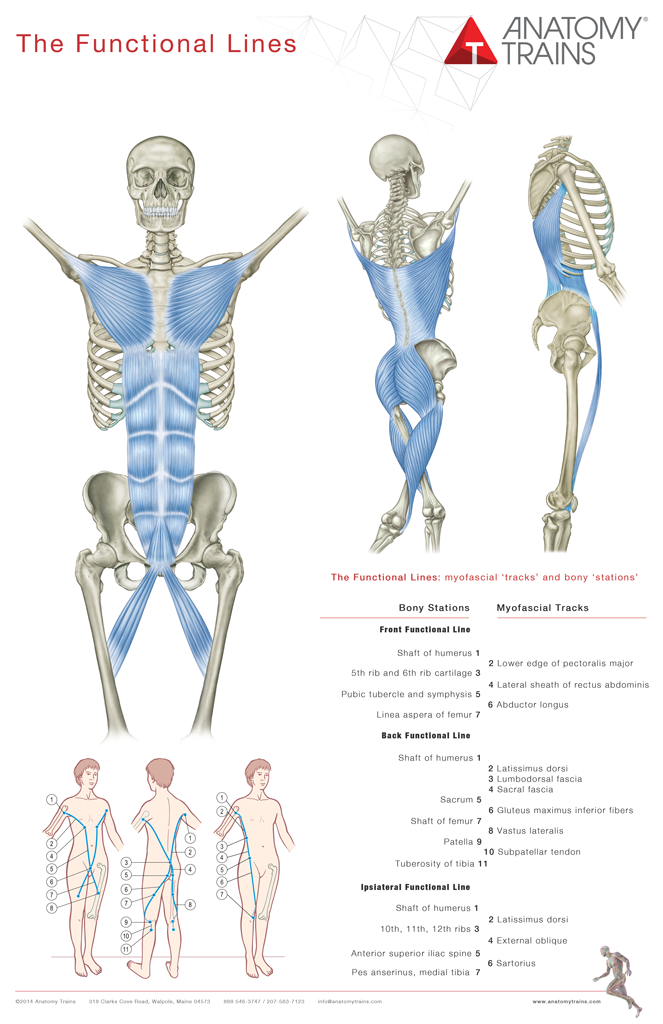
Tom Myers Anatomy Trains Pdf Free
Tom Myers has studied Fascia since the 70s and has also summarized other researchers’ studies on the Fascia. What Myers is perhaps best known for is the power transmission lines, which he describes in his book Anatomy Trains. Jul 27, 2016 - Tom Myers — the originator of the Anatomy Trains Myofascial. How we can train the movement of the next generation, stress and much more.
Tom Myers has studied Fascia since the 70s and has also summarized other researchers’ studies on the Fascia. What Myers is perhaps best known for is the power transmission lines, which he describes in his book These can be a good basis for greater understanding of the Fascia’s functions. While all of these lines merge into each other and the entire Fascia acts as a whole and a network without beginning or end, it may be useful to divide them into these different parts and study their various functions. Teoriya veroyatnosti reshebnik chudesenko. The lines enclose muscles, and it is sometimes described what the function of these muscles is or what type of muscle fiber the line contains. The lines are, therefore, not stand alone, but enclose organs, muscles and other tissues and parts which are included in the line. Anatomy Trains is an excellent book to read with many facts about both training, exercises for mobility and the Fascia’s construction. The text below is taken from section 2.4 of the Atlasbalans Academy – a training platform for those who work with Swedish Fascia Vibes & Fascia Wave Treatment.
The basic hypothesis of Thomas Myers’ writings on Fascia kinetic lines is that muscles, no matter what they do individually, also affect tissues throughout the entire body through Fascia based interconnections. These interconnections can be called Fascia lines and can be followed by the body’s dissectible “meridians” of connective tissue structures. They consist of membranes and ligaments, both superficial and deep connective tissue, loose and tight. These Fascia lines create stability, resistance, power, flexibility, elasticity, and above all- compensatory posture. So connective tissue structures work in sync, creating a fluid and balanced movement and a posture that maintains balance and direct contact between all body parts. In Myers book “Anatomy Trains” ligaments are described as the “inner bag” and outside them are Fascia based pathways, lines, interconnected longitudinal structures that distribute power and compensation. The map of Fascia lines shows the longitudinal bands and loops of connective tissue including muscles and organs, which is based on the relatively new anatomical knowledge and analysis of how the musculoskeletal system really works.
The old view of muscles, the theory of “isolated muscle function” is that muscles work only position against the origin and mostly contracts and resists. If we add on the knowledge of the Fascia’s power transmitting function, the picture is much more detailed. All tissue in the body is naturally linked to the network that the Fascia forms, but these lines are more clearly distinguishable from other tissue and appears to transmit signals / operating with more power through these pathways. The Fascia consists of many types of collagen, elastin, retinacula fibers, and the sticky proteins called “basal lamina” or also known as the extra-cellular matrix. In this basic substance nutrient exchange and communication between cells and body parts can occur.
You can see that in parts of the body that are blocked, where muscles are locked in either a static mode, or short locked mode and skeletal parts have gotten out of position. Then, the extra-cellular matrix (basal lamina) is thinned and membranes stick together. The collagen fibers of the Fascia builds up and becomes more stiff and locked from overload / poor mobility. As this occurs, and the basal lamina is also diluted the cells in the area does not get enough nutrition and hydration, and a vicious circle and state of illness is initiated. Gotovuyu bazu dannih access strahovanie.
This line connects and protects the entire rear side as a back shield, from underneath the foot to the top of the skull in two parts. From toes to knees and from the knees to the eyebrows. When the knees are extended these two parts function as a whole. The superficial dorsal line prevents fetal position and keeps the body upright and stretched.
We are born huddled together, but with maturity and development the superficial dorsal line and its muscles are strengthened until we have a strong upright position with raised head. A delicate point along this line is the plantar ligament under the arch of the foot. Problems here are often propagated further up the line. (So treating the foot is very good!) To always work along the entire superficial dorsal line helps the body towards proper balance and posture.
This line connects the entire front of the body from the feet to the sides of the skull in two parts. From toes to the pelvis and from the pelvis to the skull. When the body is upright and the hips stretched the line operates as a whole integrated Fascia.